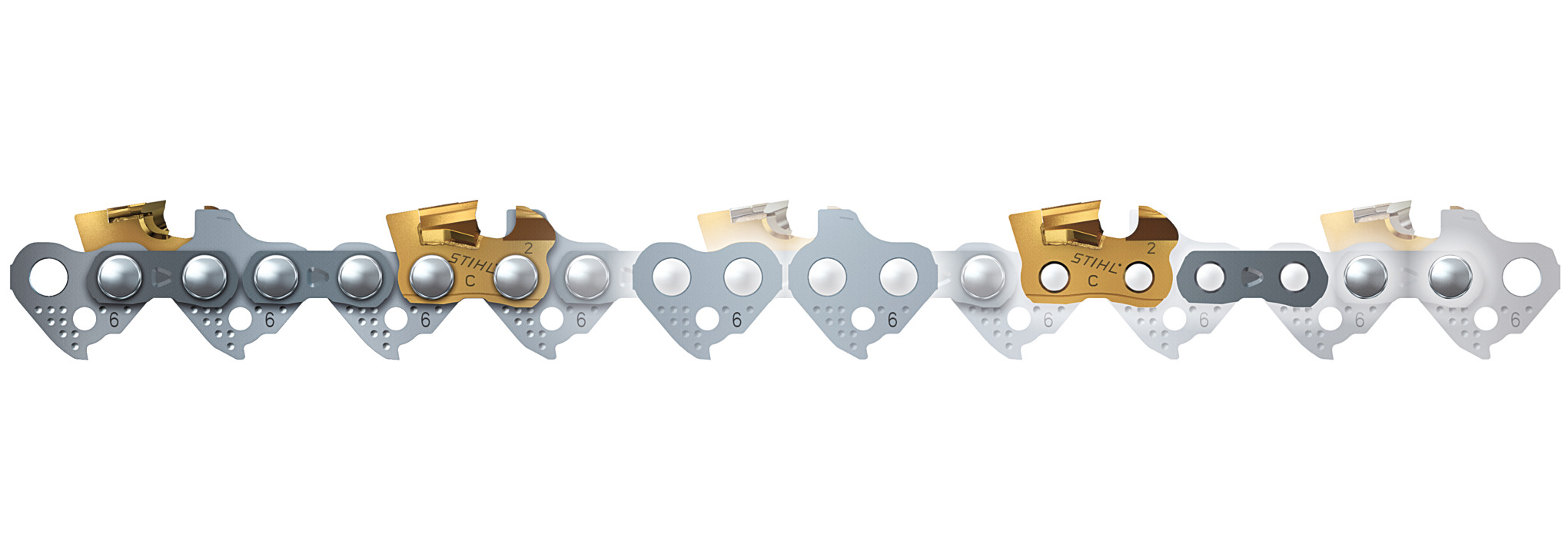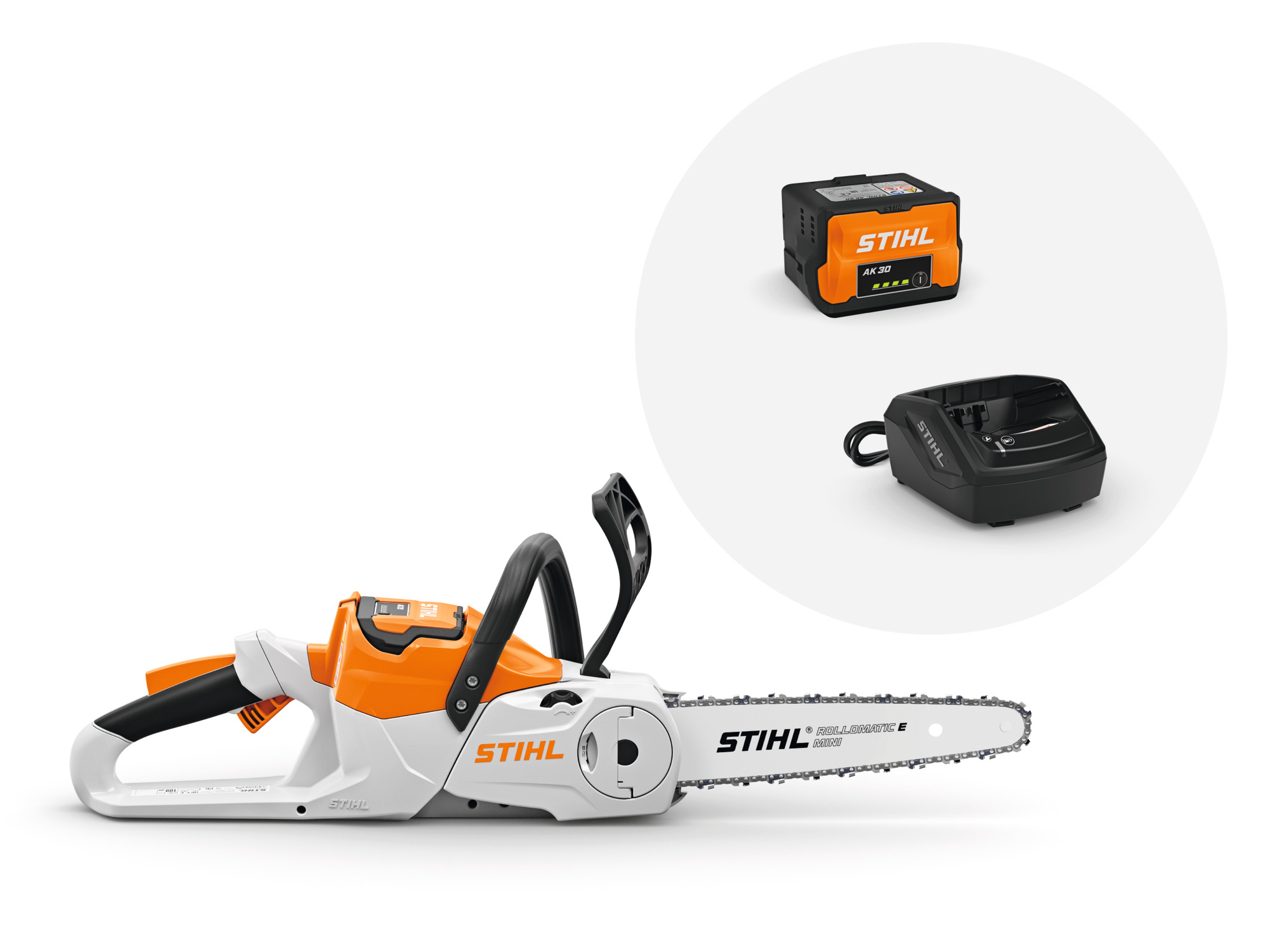Cutting firewood with a chainsaw: working well and working safely
Using a chainsaw to cut your own firewood is certainly more fun than buying logs, and can also be cheaper and more sustainable. Here’s how to do it.
29.01.2025

Overview: cutting firewood with a chainsaw
Work surface options: ground, sawhorse, or DIY cutting stand—choose based on task and ground type
Personal protective equipment is required for cutting firewood with a chainsaw
Check for permits and specific dates when you can collect wood in forests (varies by state)
Unsure? Best to contact your state's Forestry Corporation or Forest Fire Management
STIHL has developed a special saw chain for medium power chainsaws for dirty and particularly stubborn wood: Rapid Duro 3 stays sharp up to ten times longer than standard saw chains, making it an excellent choice for cutting firewood.
Medium power chainsaws are very suitable for firewood cutting, for example the STIHL MSA 60 and STIHL MSA 70.
Firewood should be cut to a length that allows it to dry properly and is manageable enough for the fireplace or hearth.A good length for firewood is between 25 and 30 centimetres. This means that you can cut a metre-long log into firewood in two or three cuts.
Firewood needs to be dried for about two years, and proper storage is also important: stack the logs so that air can circulate between them.Protect your wood from rain and moisture.A simple shelter will do.
Cutting firewood with a chainsaw: a sustainable option
Whether it’s for a fireplace in Winter, or to fuel Summer evenings around the garden fireplace, cutting your own firewood is very satisfying if you are able to do it. Your local council can issue permits for the gathering of wood in their forests and woodland; the organisation exists to support sustainable forestry practices, among other things, so you should always consult it for information before you start. Of course, trees that have fallen in your own garden and land are free for you to dispose of, and using them for firewood is a sustainable option.
If you have the appropriate permissions, training and permits, you can use your chainsaw for processing firewood on-site in woodland. Our guide explains the best way to use your chainsaw for cutting firewood safely and efficiently.
First make it manageable
To get started turning a fallen tree into firewood, we recommend cutting all the timber into metre-long pieces that are easier to work with. This can be done directly at the spot where the tree was felled, if permitted. You can cut with the wood directly on the ground if it’s flat enough, or with the help of a cutting stand that you quickly make yourself.
Tips for sawing a log on the ground
If the trunk is lying on an even surface of solid earth in the forest or the lawn in your garden, you can use your chainsaw for cutting the trunk while it is directly on the ground – though you should ensure that the chainsaw doesn’t hit the earth, as this will blunt the chain. But the very first step before you use the chainsaw to make firewood is to ensure that the trunk cannot roll away. Do this by securing the log with wedges or smaller pieces of wood, or via a felling lever.
Committed to your safety: protective equipment
Cutting with powerful tools is fun and means you can extend your abilities, which is great as long as you are relying on effective and safe protective clothing while using them. Always wear personal protective equipment when working with your chainsaw. This includes a helmet, cut protection trousers, safety boots, and more. The operating manual for your product contains more details on this. Before you use your chainsaw for the first time, fully familiarise yourself with the tool and ensure it is in flawless condition before each use. On request, your STIHL dealer will be happy to prepare your tool for its first use, and will also advise you on models and sizes of protective clothing that you can try at your leisure. Please remember that personal protective equipment is no substitute for safe working techniques.
Before cutting the wood to length, you need to mark where to cut with the chainsaw. You can use a forestry tape measure to do this, and make marks at 1-metre intervals.

Start the chainsaw running lightly and place it on the first mark; start cutting. The cut should go approximately ¾ of the way through the trunk – don’t cut all the way through in order to avoid sawing into the ground and damaging your chainsaw. Repeat the process at all the marked points.

Turn the trunk over – you may find a felling lever helpful. Don’t forget to secure the trunk against rolling away again before you continue working.

Finish the cuts you started from the opposite side. Your metre-long pieces of wood are ready for further processing into firewood.

A DIY cutting stand for sawing long trunks on
If the surface of the ground is not suitable for working on directly, you may need some kind of stand to help you: this not only protects your saw chain but also your back, because it means you will be working at an ergonomically appropriate height. You can quickly cut a log support from another piece of wood. Always make sure that any wood you are cutting with a chainsaw is secured in place and not able to roll away.
To make your cutting stand, first use the saw to cut a V shape out of a log. The width of the V you cut should be equal to the diameter of the trunk you are chopping into firewood.

Position the cutting stand so it’s stable and place a log into the V. Hand lifting tongs may make your work easier. The trunk should be firmly in the notch, with no leeway – you can additionally secure it using wedges or small pieces of wood if required.

With the saw chain running lightly, you can now cut through at the marked points. Make sure that the sawn-off piece of wood doesn’t fall on your feet!

Reposition the length of wood on the stand if necessary. Repeat the sawing process until you have finished cutting all the pieces.

Splitting the lengths for firewood
Metre-long pieces of trunk probably won’t fit in your fireplace, and thicker trunks need to be split for ease of use – in any case, smaller pieces of firewood will always dry better than large logs. This is important, as damp wood burns less readily and releases soot and smoke.
With the help of an axe, you can quickly split the wood lengthwise using a splitting wedge rather than a chainsaw for cutting. First secure your piece against rolling away.

Drive the log into two parts using a splitting wedge. Cutting a notch with your chainsaw makes it easier to insert the wedge, then strike it until the wood splits. Depending on the thickness of the trunk, you may need to split the halves again, into quarters.

The resulting split wood can be further processed on the sawhorse, to create handy pieces of firewood.

Environmentally friendly firewood
When you burn wood, it only releases as much carbon dioxide as the tree has absorbed during its growth – which means that if you generate heat using wood, you know it is a carbon-neutral method.
Processing into firewood
It’s best to use a sawhorse when processing split lengths of wood and smaller branches to create firewood. A sawhorse helps you set up safely, and also offers the greatest possible working convenience for cutting firewood.
Place a piece of wood on the sawhorse and secure with a rubber band or chain. Now you’re ready for the final stage of cutting your timber into firewood. Very round branches will often turn in the sawhorse even with a rubber band; if this happens, guide the chainsaw onto the wood using the stop claws – this will help you to secure and cut even the trickiest branches.

Start the chainsaw safely and start cutting.

Using the sawhorse setup, you can now professionally chainsaw off firewood logs one by one.


Storing firewood
Before the firewood is ready to burn, it needs to dry for about two years, during which time it must be stored correctly to dry well. Stack individual logs in such a way that air can circulate between them, and protect the wood from rain and moisture.

Cut firewood with a chainsaw
With the Rapid Duro 3, STIHL has brought to market a chain with carbide tips for medium-power chainsaws. Its teeth are no match even for dirty or particularly tough wood. It also stays sharp for up to ten times longer than standard saw chains.
Note
Only rapidly biodegradable chain lubricants, and alkylate fuel mixtures should be used in for cutting firewood in woodland and natural habitats. You should take empty canisters away with you and dispose of them properly.








